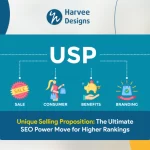
7 Signs of Ad Fatigue and How to Fix It?
When you advertise on Google, YouTube, or Instagram, you might notice this pattern: great results at the start, followed by a drop in conversions.
What causes this?
It might be ad fatigue. It exhausts your audience like a never-ending PowerPoint presentation. Imagine scrolling through your social media and seeing the same ad for the fifth time. You lose interest and either block the ad or avoid it. This is a typical situation in the current digital world. As people encounter the same content repeatedly on different platforms, their interest wanes, and so do our marketing results.
What is Ad Fatigue?
Ad fatigue occurs when your audience becomes bored with seeing the same ads over and over, leading to a loss of interest. This results in lower engagement, fewer clicks, and wasted advertising money. If not addressed, it can significantly impact the success of your campaign.
According to Search Engine Journal & RISEOPP, data shows that the average click-through rate (CTR) for social media ads was 1.2% in 2023, a slight decline from 1.4% in the previous year. This underscores the impact of ad fatigue, as users are becoming less responsive to repetitive ad content, posing a risk for advertisers.
7 Signs Your Ads Are Suffering from Fatigue
1. Declining Click-Through Rates (CTR)
A significant drop in CTR usually means users are losing interest in your ads.
2. Increased Cost-Per-Click (CPC)
If your click costs rise without more conversions, ad fatigue might be the issue.
3. Decreased Engagement on Social Media
Fewer likes, shares, or comments on your posts can indicate that your audience is tuning out.
4. Higher Bounce Rates
If users leave your landing page quickly after clicking, they may not find your content interesting or relevant.
5. Negative Feedback and Comments
An increase in negative comments or complaints can show that your content is becoming tiresome.
Also Read: How do you remove negative Google reviews?
6. Stagnant or Decreasing Conversion Rates
If your conversion rates stop growing or start to fall despite ad exposure, it’s time to rethink your approach.
How to Address Ad Fatigue?
Now that we recognize the signs let’s examine practical ways to refresh your ad campaigns on different platforms.
1. Refresh Creative Assets Regularly
Regularly updating your ad content is one of the most effective ways to prevent fatigue. Here’s how to do it across different platforms.
Google Search & Display Ads
- Rotate Ads Frequently: Change headlines, descriptions, and visuals to avoid repetitive messaging.
- Dynamic Keyword Insertion: Personalize ads by dynamically inserting relevant search terms.
YouTube
- Change Thumbnails & Titles: Update thumbnails and titles to appeal to different audience segments.
- Vary Ad Formats: Use a mix of skippable, non-skippable, and bumper ads to keep things fresh.
Also Read: How do you promote your business on YouTube?
Social Platforms (Twitter, LinkedIn, Instagram)
- Update Visuals: Use new graphics, videos, and different colour schemes.
- Test New Formats: Stories, Reels, and carousel ads help avoid ad burnout.
Tip: Maintain a content calendar and rotate creative assets every 1-2 months to ensure the ad remains fresh and relevant.
2. Segment Audiences for Better Targeting
Effective audience segmentation ensures your ads reach the right people, reducing the risk of overexposure.
Google Ads
To keep ads relevant, use audience segments like In-market (users actively searching for similar products), affinity (people with related interests), and custom intent.
YouTube
Segment by interests, behaviours, and demographics to avoid showing the same ads to the same people repeatedly.
Social Platforms (Twitter, LinkedIn, Instagram)
Target ads to specific demographics, job titles, interests, and behaviors. Use custom and lookalike audiences for retargeting and audience expansion.
Tip: Review audience insights regularly to optimize targeting and reduce the risk of showing the same ads too often.
Also Read: Marketing to Gen Z: How do you make it right?
3. Use A/B Testing to Optimize Performance
A/B testing is essential to understanding which ads perform best and ensuring your campaigns stay fresh.
Google Search & Display Ads
Test different headlines, calls-to-action, and visuals to see which combinations drive the best results.
YouTube
Experiment with video lengths (e.g., 15s vs. 30s) and CTAs to find the most engaging version.
Social Ads
A/B test ad copies, visuals, and placements (e.g., feed vs. Stories) to identify what works best.
Tip: Keep A/B testing as an ongoing process to improve ad relevance and engagement continuously.
4. Implement Frequency Capping and Retargeting
Using frequency capping prevents the same people from seeing your ads too often. At the same time, retargeting ensures you’re delivering updated, relevant messages.
Google Ads & YouTube
Set frequency caps to control how often users see your ads. Use remarketing to re-engage users based on previous interactions.
Social Platforms
Use frequency capping to limit exposure and sequence ads to tell a story rather than repeating the same message.
Tip: Frequency capping combined with retargeting helps reduce ad fatigue and keeps your audience engaged.
5. Leverage UGC and Social Proof
User-generated content (UGC) and social proof can refresh your ads while adding an element of authenticity.
Google Ads
Add reviews or star ratings to increase trust.
YouTube
Feature real customer experiences to add a personal touch to video ads.
Social Ads
Share UGC like customer testimonials, product reviews, and influencer content.
Tip: UGC and social proof add credibility and variety to your ads, making them more engaging and less likely to cause fatigue.
Conclusion
Ad fatigue is a formidable challenge in the modern advertising landscape, but it’s not insurmountable. Review your current ad strategies and make frequent adjustments to keep your audience engaged. For personalized solutions to improve & manage your ads and boost ROI, reach out to us anytime!




